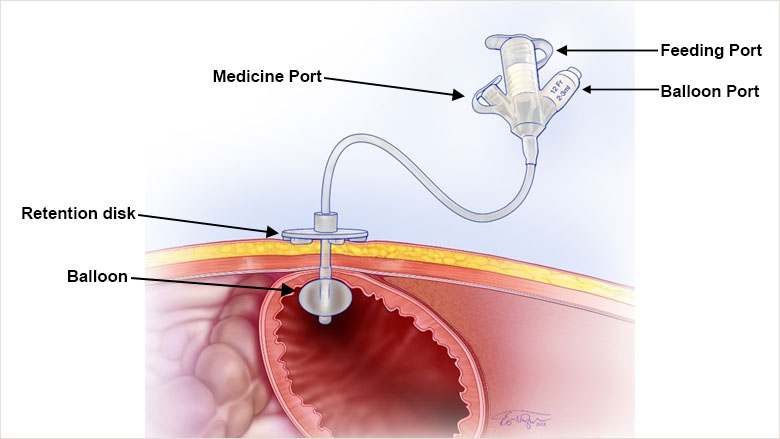
Image Source: Google
Advancements in gastric tube technology have made significant strides in enhancing comfort and improving the quality of life for patients who require enteral feeding. Gastric tubes are commonly used to provide nutrition and medication to patients who are unable to eat or swallow normally.
If you are looking for the best gastric tube services then you should visit this website https://www.appliedmedical.net/enteral/g-tubes/. These tubes are essential for patients with conditions such as dysphagia, neurological disorders, or those undergoing surgery or medical treatments that restrict oral intake.
Traditionally, gastric tubes were made from rigid materials such as rubber or plastic, which could cause discomfort and irritation to the patient. However, recent innovations have introduced softer and more flexible materials that are designed to enhance comfort and reduce the risk of complications. Silicone and polyurethane are now commonly used in the manufacturing of gastric tubes, providing a more gentle and flexible option for patients.
One of the key benefits of these newer materials is their increased biocompatibility, meaning they are less likely to cause tissue irritation or injury. This is particularly important for patients who require long-term or continuous enteral feeding, as the risk of complications such as pressure ulcers or skin breakdown is reduced. The softer, more flexible nature of these materials also allows for easier insertion and positioning of the tube, further improving patient comfort.
In addition to advancements in material technology, innovations in tube design have also played a role in enhancing patient comfort and quality of life. One example is the development of low-profile or “skin-level” gastric tubes, which sit flush against the skin and are less obtrusive than traditional tubes that protrude from the abdomen. These low-profile tubes are more discreet and comfortable for patients, allowing for greater freedom of movement and reducing the risk of accidental dislodgement.
Another important innovation in gastric tube technology is the introduction of antimicrobial or antireflux features. These features help reduce the risk of infection and aspiration, which are common complications associated with enteral feeding. Antimicrobial coatings or materials can help prevent the growth of bacteria on the tube surface, while antireflux valves or mechanisms can help reduce the risk of gastric contents backing up into the esophagus or lungs.
Advancements in gastric tube technology have not only focused on improving patient comfort but also on enhancing the ease of use for healthcare providers. Innovations such as radiopaque markers, depth markers, and stylets have made it easier to confirm the correct placement of the tube and reduce the risk of complications. These features help ensure that the tube is properly positioned in the stomach or small intestine, reducing the risk of aspiration or tube-related injuries.
Furthermore, the development of enteral feeding pumps and administration sets has revolutionized the delivery of nutrition and medication through gastric tubes. These devices allow for precise control of flow rates and volumes, ensuring that patients receive the appropriate amount of nutrition and medication according to their individual needs. Enteral feeding pumps also offer programmable feeding schedules, alarms for occlusions or disconnections, and other safety features that help improve the efficiency and safety of enteral feeding.
Overall, the innovations in gastric tube technology have had a significant impact on enhancing patient comfort and quality of life. The introduction of softer and more flexible materials, low-profile designs, antimicrobial features, and advanced delivery systems have all contributed to improving the safety, convenience, and effectiveness of enteral feeding. These advancements have not only benefited patients who require long-term enteral nutrition but have also made a positive impact on their caregivers and healthcare providers.
As research and development in gastric tube technology continue to evolve, it is likely that we will see further improvements in design, materials, and features that will further enhance patient comfort and quality of life. By prioritizing patient-centered care and incorporating the latest technological advancements, healthcare providers can continue to provide the best possible care for patients who require enteral feeding.